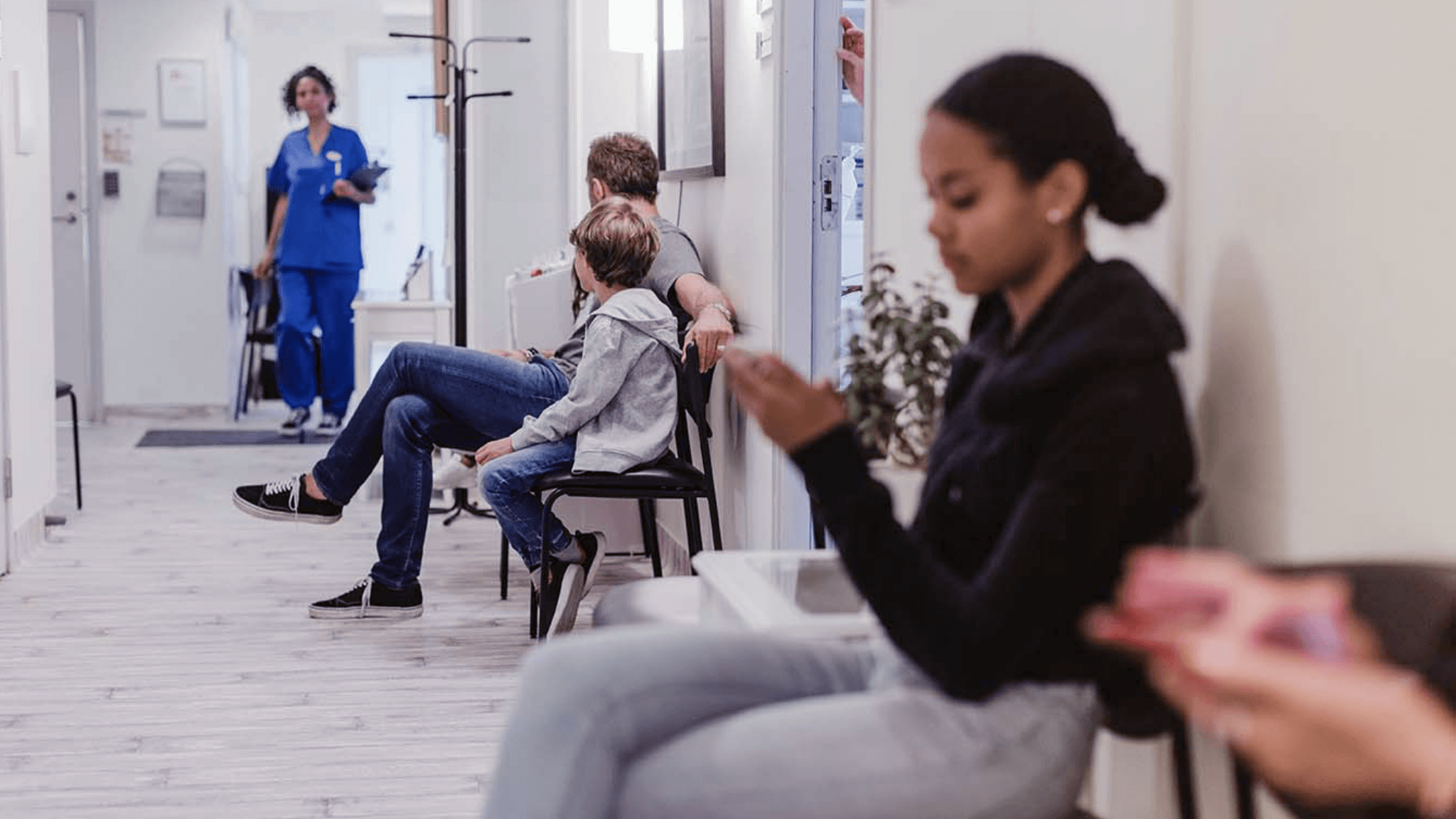Over the last few years, facility managers in healthcare have become an important part of the effort to expand services beyond direct patient care. This emphasis on the overall experience — for patients, families, staff and others — reflects an awareness that hospitals and clinics are subject to the same market forces as other enterprises and need to improve at a customer satisfaction level.
It’s also an element in strategies that deploy comprehensive solutions as part of digital transformations that enhance the full range of services available while improving workflows, delivering cost efficiencies and making the entire experience more human-centric.
This approach has manifested itself in a number of ways, including the increasingly widespread use of indoor wayfinding solutions in healthcare facilities. Occupants in healthcare spaces may not be aware that the GPS service they’re almost certainly familiar with from their smartphone for outdoor navigation stops almost as soon as you have a roof over your head.
Given the size, complexity and unfamiliar layout for most visitors to a hospital, the need for digital guidance doesn’t stop at the front door.
This, combined with what the hospital itself gains from indoor wayfinding deployments, is why so many healthcare facilities are joining office complexes, airports, industrial settings and other spaces in leveraging the capabilities of wayfinding infrastructures based on Bluetooth® Low Energy (Bluetooth® LE).
Let’s look at the various benefits driving the adoption of indoor navigation systems in the healthcare industry. What are the benefits of navigation through hospitals? Check it out!
Table of contents:
- Navigating the hospitals – benefits for patients, families, vendors and other visitors
- Benefits for healthcare facilities by navigating in large hospitals
- Easy to set up, easy to own
- A small enhancement that makes a huge impression
Navigating the hospitals – benefits for patients, families, vendors and other visitors
These are groups that are more likely to be entering the facility for the first time or have very limited knowledge of where to find what they need. Here’s why indoor navigation is important them:
- It meets their expectations. Wayfinding solutions are no longer a rarity and, for many, are instead closer to something of an expectation in certain kinds of facilities. In the age of “there’s an app for that”, consumers are used to relying on their smartphones to address current challenges, like the need for directions, wherever they are.
- They save time. Perhaps the most obvious point, wayfinding lets occupants take the most direct route to their destination. Many hospitals, despite adequate signage, can still be a challenge for anyone unfamiliar with the layout. By simply connecting to the network, anyone can get the best possible instructions to get to their destination without having to wait in line to speak to someone or simply wander around until they find what they’re looking for.
- It keeps them safe. Speaking of wandering, there are plenty of areas in a hospital where visitors should not go unless they have some business there. Hospital staff is busy enough already and cannot always take on additional duties as traffic police, monitoring the intentions of everyone passing in the hallway. Wayfinding services can limit the number of building occupants that are wandering through areas where they should not be for whatever reason.
- A better overall experience. For many visitors, there is already an element anxiety associated with any visit to a hospital, even before they enter. The facility itself can be intimidating because of its size. Also, the daily rotation of patients, families and visitors means that every day, a significant portion of the building’s occupants are there for the first time. They don’t know where things are or how to get where they want to go. Indoor navigation services provide an immediate comfort level for these people via the familiar tool of their own smartphone.
This same idea applies to other types of visitors to hospitals, of which there are many. Think of the vendors, suppliers, repairmen and others who visit the building, often for the first time. They too have appointments to keep and offices or individuals to find in a large and unfamiliar space. Wayfinding can be of equal benefit to them as well.
Benefits for healthcare facilities by navigating in large hospitals
The advantages of indoor wayfinding are directed inwards as well. You could even argue that the facility itself benefits more than the visitors for whom the service was designed. Just consider:
- An enhanced “brand” for the hospital or clinic. Today’s consumer is tech-oriented and they expect to use an application in their phones for nearly everything, including wayfinding. Just like free Wi-Fi everywhere or phone charging stations all over, indoor wayfinding is part of the expected array of services that modern, tech-savvy institutions are supposed to have. Offering it means being perceived as up-to-date and modern.
- Signage costs. Updating and maintaining signage in a modern hospital is a major expense. Obviously, no wayfinding application can replace all signs and there will always be a need for traditional signage but the savings from being able to substitute digital directions for even a fraction of existing signs can be significant.
- Improved patient experience. Patients and visitors who can navigate the hospital easily are more likely to have a positive experience, which is great for them, and the hospital. This better experience translates into higher patient satisfaction scores and institutional reputation.
- Fewer missed / late appointments. Time really is money in a hospital environment and when patients are carefully scheduled in a tight order throughout the day, late or missing patients can disrupt the whole calendar. While this can unfortunately never be eliminated, wayfinding solutions can help.
- Reduce staff interruptions. Those “wandering” patients we mentioned earlier often stop and ask staff members for directions. While not a major distraction if it happens once, studies show the nurses and others have to deal with a constant stream of interruptions. Wayfinding can eliminate some of this burden.
- Visitor safety. Visitors using an indoor navigation system can be guided away from areas that are sensitive because of health & safety or security reasons.
Easy to set up, easy to own
The Bluetooth® LE-based network infrastructure that supports wayfinding solutions relies on the fact that all modern mobile phones have Bluetooth® and are designed to work with location services. That means everyone with a smartphone has the hardware needed to access everything. All they have to do is download a dedicated indoor wayfinding app provided by the hospital.
The app uses the phone’s built-in Bluetooth® to triangulate beacons set up throughout the facility. This provides the user with indoor navigation and wayfinding and any location-based content the facility would like to add. This means, for example, that the information displayed for the user can change as they walk through a building, featuring information about an office’s hours, what they offer, etc.
The physical infrastructure needed to support an indoor wayfinding application is easy to install and scalable to the size needed to accommodate a typical hospital. Once your application is ready with location information, the network is easy to deploy and is up and running within days.
A small enhancement that makes a huge impression
Modern healthcare facilities now go to great lengths to provide patients and others with everything they need to feel comfortable while under care or visiting the premises.
The size and complexity of today’s typical hospital can be overwhelming. Indoor wayfinding solutions like those that guide you through an unfamiliar airport, warehousing complex or corporate office space can deliver the same support and convenience to occupants of healthcare facilities, who are likely to be there for the first time.
A simple smartphone application of the kind that they’re already familiar with can be on stand-by, always ready to help.
At Kontakt.io our mission is to deliver human-building interfaces that provide people with delightful, useful, and safe indoor experiences to help make buildings work for people.If you’re thinking about making your healthcare facility more accommodating and open to those who don’t yet know where everything is, contact us and let’s talk about how we can do it together. We hope you already know why navigating in large hospitals works.



